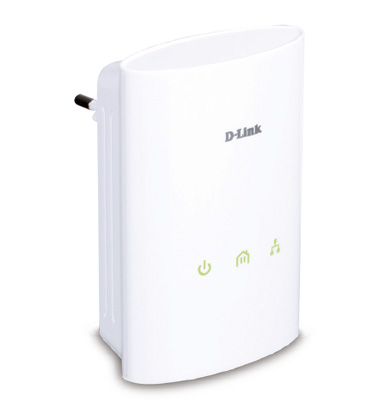
Data Transmission Over Electrical Wiring
The D-Link DHP-306AV Powerline AV Network Adapter, compliant with the HomePlug AV standard, uses your homes existing electrical wiring to create a network or extend your existing network.1 It turns every power outlet into a possible network connection to access digital media devices, game consoles, print servers, computers, and network storage devices throughout your home.
Ideal for Bandwidth-Intensive Applications
The DHP-306AV is capable of delivering data transfer rates of up to 200 Mbps.2 This rapid transmission speed makes it ideal for bandwidth-intensive applications, guaranteeing smooth HD video streaming, VoIP calls, and lag-free online gaming experiences. In addition, it prioritizes Internet traffic, ensuring that multimedia applications do not experience glitches while web surfing and downloads are in progress. This device provides ample network bandwidth, enabling digital home consumers to tap into existing electrical wiring for high-quality multimedia streaming.
Convenient Setup and Secure Operation
The DHP-306AV plugs directly into a power outlet, and does not require any additional cables. Extend your home network by connecting multiple devices in the farthest corners of your home, or attach a switch or wireless access point to the adapter for additional connectivity. For convenient setup, an encryption key can be quickly configured with the push of a button. The adapter implements 128-bit AES data encryption to protect the network from unauthorized wire tapping. With hassle-free plug and play installation, the DHP-306AV is an ideal solution to create a wall-to-wall home network.
Power Saving Feature
The DHP-306AV incorporates a power saving mode to comply with the European Energy Using Product (EuP) Directive. If no data transmission or reception occurs over a certain period of time, the adapter will automatically go into sleep mode to save power.

No comments:
Post a Comment